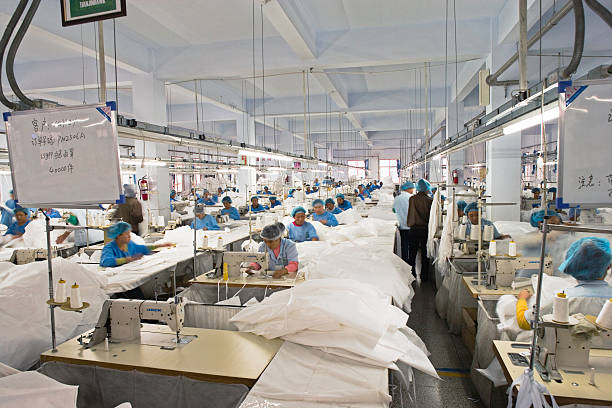How are Low-Value e-Commerce Goods from China Impacting the European Union Market

The rise of e-commerce has revolutionized global trade, connecting consumers and businesses in ways unimaginable just a few decades ago. A major force in this shift has been the influx of low-value goods from China, which have flooded markets across the globe, including the European Union (EU). China is the largest e-Commerce market in the world and its goods serve the third largest single market in the world which is the European Union.
While these products offer consumers cheap and diverse options, their widespread presence has created significant ripple effects throughout the EU market. Here are five examples:
1. The Price War: Lower Prices, Higher Competition
One of the most visible impacts is the intense price competition that these low-cost imports create. Chinese sellers, often leveraging platforms like AliExpress, Wish, and Shein, are able to offer goods at prices far below those of European retailers. This price advantage stems from several factors: cheaper labor, mass production, and efficient logistics networks. For consumers, this means access to affordable products in categories like electronics, apparel, and home goods. However, for European businesses, especially small and medium-sized enterprises (SMEs), this creates a challenging environment where competing on price alone becomes nearly impossible.
2. The Rise of Cross-Border E-commerce and the “Parcel Bomb” Effect
The convenience of ordering directly from China has led to an explosion of small parcels entering the EU. This phenomenon, often referred to as the “parcel bomb,” has overwhelmed postal and customs services. Millions of low-value packages arrive daily, putting immense pressure on logistics infrastructure. The sheer volume has made it difficult for customs authorities to inspect all goods for compliance with EU safety, environmental, and labeling standards. While recent reforms have aimed to tighten customs controls, the flood of parcels remains a significant challenge.
3. Tax Evasion and Regulatory Challenges
Until July 2021, many low-value goods (under €22) from non-EU countries were exempt from Value Added Tax (VAT), a loophole that Chinese sellers exploited to offer even lower prices. This tax advantage not only put European sellers at a disadvantage but also led to significant tax revenue losses for EU governments. To address this, the EU introduced new VAT regulations in July 2021, eliminating the exemption and requiring online platforms to collect VAT at the point of sale for all goods. While this has helped level the playing field, enforcing these regulations across thousands of small sellers remains an ongoing challenge.
There is an additional challenge when it comes to customs duties. The low value threshold remains, at least for now, at €150 EUR, so these companies avoid paying duties on low-cost goods entering the EU.
4. Quality, Safety, and Environmental Concerns
The influx of cheap goods from China has raised questions about product quality, safety, and environmental impact. Many low-cost products fail to meet EU standards, leading to risks related to product safety, such as faulty electronics or toxic materials in toys. Additionally, the environmental impact of producing, shipping, and disposing of cheap, short-lived products is significant. With the rate of returns rapidly increasing as well, that means many products are shipped back and forth, and to offset the price of reverse logistics, many products are just dumped.
5. The Shift Towards Ethical and Conscious Consumption
In response to these concerns associated with cheap imports, there has been a growing movement among EU consumers toward more conscious and sustainable consumption. Many consumers are increasingly considering the environmental footprint, labor conditions, and overall ethics of the products they buy. This shift has encouraged some businesses to focus on locally produced, sustainable, and high-quality goods.
The impact of low-value e-commerce goods from China on the European Union market is multifaceted. While consumers benefit from lower prices and greater variety, the challenges faced by local businesses, regulatory bodies, and sustainability advocates are substantial. The rise of these goods has forced the EU to adapt its regulatory framework, rethink trade practices, and address the broader implications of a fast-consumption culture.
Do you want to contribute to a pan-European think tank on this issue?
Trade Duty Refund has teamed up with other organizations in the EU to brainstorm and propose ideas to counter the influx of low-value goods. We are looking for global e-commerce retailers and platforms affected by the Chinese e-commerce market to join a think tank that will look to gather expert opinions and suggestions to present to EU authorities.
Contact us at contact@tradedutyrefund.com for more information!
Trade Duty Refund can help you understand some of these steps and support you in claiming back customs duties from processing returned items. Set up a discovery call to get started!
